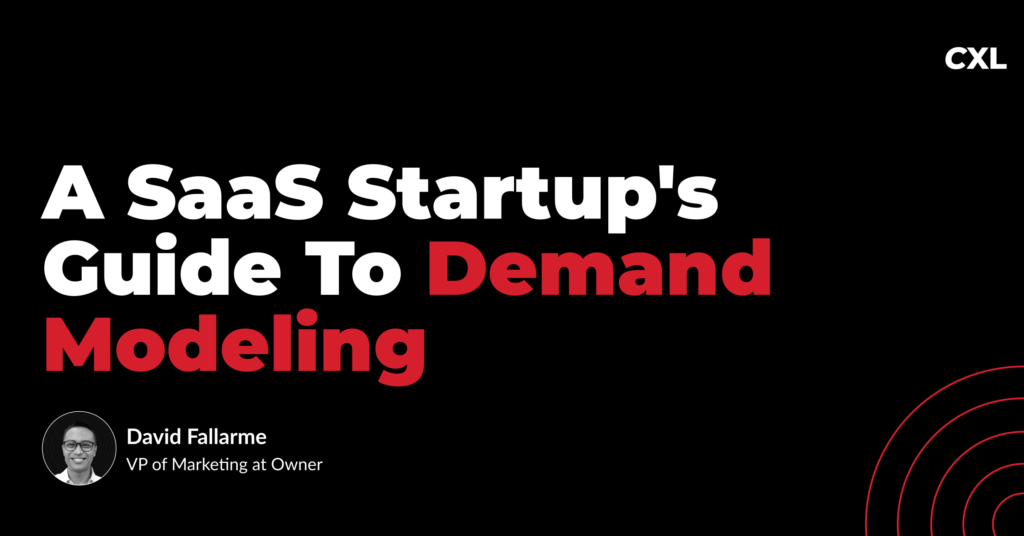So you’re ready to go to market, you have big goals, and you’re pumped.
But wait.
How are you going to hit those goals?
Do you have the right goals in place?
And are your goals achievable?
So, how can you answer these questions?
Enter demand modeling.
In this post, I’ll break it down for you, including:
Table of contents
What is Demand Modeling?
Demand modeling is the part of your business strategy and planning that dives into your target customers’ behaviors and overall market trends.
With it, you analyze several factors, like historical data and market conditions, etc., to forecast future demand for your products and services. This information will help you to make informed decisions about your go-to-market (GTM) strategy.
This is how you figure out to hit your go-to-market goals.
But before we discuss the details, let’s talk about the typical GTM process, which you’re probably already familiar with. However, there’s one step I want to call to your attention. It’s one often overlooked or missed by SaaS companies.
Getting from “here” to “there”
You’ve created a product that you’re proud of and you’re ready to go to market. Your vision is strong, the belief in your offer is unwavering, and you have a lot of hope.
But this alone won’t cut it. And, you probably know that already. The method behind your GTM strategy is paramount, and every detail matters.
The typical process is as such:
- Set an ARR goal
- Tell the GTM team about the goal
- Make it make sense
- Hit your ARR goal
In my experience, Step 3 is where things tend to get murky. This is the step that reveals how you and your team get from “here” to “there.”
Setting a goal is one thing. Setting, implementing, and achieving a well-informed ARR goal is another. And this is where demand modeling comes into play.
You may find that you have no real reasoning behind your goals, only the expectation that they’ll be hit. So before we tackle this step, let’s make sure the other steps are executed the right way.
Step 1. Setting an ARR goal
When setting an ARR goal, you must be ambitious and realistic.
Start by calculating your current ARR and establish an accurate baseline to measure against. Define your growth strategy based on the data points mentioned above (i.e., market traditions, historical customer data, etc).
Next, set an ARR goal that is ambitious but realistic. Sometimes, this goal is imposed on you by other dynamics of your business; for example, if you have to raise the next round of funding and investors expect a certain growth rate. In any case, this goal should be both attainable and challenging at the same time.
So, for example, if your current revenue is $100,000, and you’d like to grow your business by 30%, your target ARR should be $130,000.
Step 2. Tell the GTM team about the goal
Once you’ve established your ARR goals, it’s time to bring in your team.
Your team should be a group of experts whom you trust to provide honest feedback. Roughly speaking, this team is typically those directly responsible for driving revenue growth; including Product, Growth, Marketing, Sales, and Customer Success. They care about the success of your go-to-market efforts as much as you do and will execute their roles to make it happen.
That said, it’s important to have alignment and open discussions to ensure your ARR goals are realistic and attainable.
These conversations also motivate each team member while communicating clear expectations and planning to hit those ARR goals. With that comes accountability and reward.
Step 3. Make it make sense
This step is the make or break behind your strategy. This is where you figure out how to get from “here” (your current ARR) to “there” (your ARR goal).
Before we begin, take a look at this demand model sheet.

This demand model sheet is what I’ll use to explain how to prepare your demand modeling forecast. Click on “File” and then “Make a copy” to make it your own.
It covers the essential details often missed to properly forecast your goals and establish the quantifiable strategy behind that process. It’s your job to personalize this to your company’s goals and ensure they are realistic and attainable.
This step begins before Step 2, as filling it out with your GTM team is essential.
Then, the best next steps are to:
- Look at cost differences between MQL types
- Compare CP-SQL, and use trailing 6Q data
- Be more precise around sales cycle length
Let’s dive in.
Cost differences between MQL types
The cost differences between MQL (marketing qualified leads) types depend on a few factors, like the quality of the lead, the channel that generated the lead, and the sales process.
This is important to consider because this cost difference can identify the efficiency and effectiveness of your go-to-market efforts.
For example, Data Axle reports that outbound marketing-generated MQLs cost over 60% more than inbound marketing-driven MQLs. While this varies by the industry type, it’s important to be familiar with these numbers because not all leads are equal in quality. Some might take longer to close or cost more to acquire. Understanding which marketing channels are more cost-effective than others allows you to do two things:
- Lean into that method, and
- Find ways to improve other methods that aren’t up to par
B2B Fractional Marketing Leader, Rui Nunes, is an expert here and can provide some great tips to fine-tune this process.
CP-SQL, and use trailing 6Q data
An SQL (sales qualified lead) is where a lead shows perceived interest in making a purchase and has already talked with the sales team to verify fit and intent. So, the CP (cost per) SQL is the cost associated with this particular lead type.
In the above example, you compare the cost of marketing leads; here, you are comparing the cost of sales leads—the leads that are handed off to your sales team because they are likely to purchase.
To ensure this data is up to date, compare current results with the trailing results from the past six quarters (6Q), if you can. This ensures that you’re not measuring current information with historical data that are either seasonal or outdated (and to some degree, irrelevant).
If, however, this data isn’t clear or available to you, set clear expectations with the rest of the team that the first few quarters will involve a lot of iteration and learning.
Sales cycle length
One data point that can be overlooked is the total duration of the sales cycle.
Being precise here is crucial, so consider doing the following:
- Identify each step of your sales cycle. That means each stage is clearly defined, from initial lead generation to closing the deal. The criteria to move from one stage to the next should also be crystal clear.
- Get RevOps in order. The teams across the entire customer lifecycle need to be in alignment; that means your Marketing, Sales, and Customer Success teams are working together for operational efficiency to hit the same goals. This also allows you to track the leads and customers and each step in between.
- Set milestones: These need to be established early on, and the time spent at each stage should be recorded. If you know how much time each lead spends at each stage, you’ll quickly see the bottlenecks slowing down business.
- Analyze the data: Be sure to measure current data points to any historical information you may have. Here, you can identify any trends and patterns that may impact your future forecasts.
- Regularly review: Be sure to look back at this information and update your expectations based on any new data.
To accurately measure this, look to experts like co-founder and CEO (Americas) of EngageRocket, CheeTung (CT) Leong, who have worked closely with business leaders to build high-performing—and efficient—teams according to their respective market.
With these variables accounted for, you’ve filled in Step 3 and, most importantly, established data-backed goals that make sense.
Step 4. Hit the ARR goals
I know this step is self-explanatory. You either hit your ARR goals or you don’t. But if you miss, you now have a tool to diagnose which part of the funnel needs improvement. Regardless, your go-to-market strategy isn’t a one-and-done process. It’s ongoing, and demand modeling pokes holes in the black box of “we hit!” or “we missed!” both of which give you a clear indicator of what’s going on.
Repeat the cycle and begin again.
Ready to roll
So there you have it.
With strategic, well-informed demand modeling, pulling goals from the sky is a thing of the past.
Demand modeling is a powerful tool that provides priceless insights into customer behavior and market trends. By gathering specific data points, like historical info around sales length, MQL types, and market trends, you can make informed decisions and set realistic goals for your SaaS company’s growth.
And, chances are, you’ll actually hit them.




